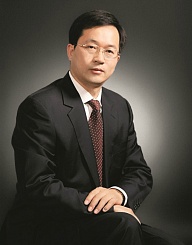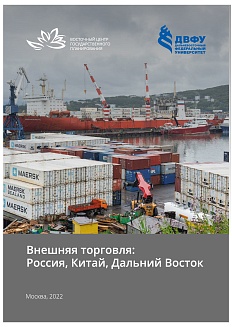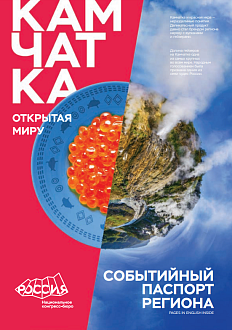At the Eastern Economic Forum, new growth areas will be found for regional cooperation between Northeastern China and the Russian Far East, which will become a powerful driving force for trade and for the economies of both countries — believes General Manager of China Chengtong International Investment Zhou Liqun, who is also Chairman of the Union of Chinese Entrepreneurs in Russia, Head of Representation at the Centre for Trade Development and Investment Management in Europe, and President of the Greenwood International Trade Centre.
Russia has changed a great deal within the last decade
— When did you first visit Russia? What, in your view, are the three most important changes to have taken place since that time?
— I came to Russia to study in the late 1980s, and have witnessed the development of your country over the last 30 years. Several significant changes have taken place during this period. Firstly, people’s quality of life has steadily improved (which the re-election of President Putin only goes to confirm). Secondly, there has also been a degree of improvement in the business environment: corruption has been brought under control, the structure of the market and legislative base have been improved, and investor confidence in Russia on the part of Chinese business has grown steadily. And thirdly, Russian—Chinese relations have reached a historic peak.
— China’s trade turnover with Russia is approximately USD 80 billion. Where do you see areas for growth?
— In my view, Russia and China should work first and foremost on strengthening cooperation to develop production capacity. Both countries have strong and complementary areas of activity, including mechanical engineering, producing transport equipment, extracting and processing raw materials, and manufacturing finished products. Secondly, Russia and China should expand financial cooperation and bring together finance and production. Thirdly, we need to foster small and medium-sized businesses, of which there are many, and which are a key force in the growth of trade and economic cooperation.
With the support of Chengtong Holdings Group, we are engaged in preparations to create a RussianChinese fund for developing industrial cooperation worth USD 5 billion
You haven’t stood still amid sanctions
— To what extent are Western sanctions against Russia affecting trade?
— Western sanctions have taken a toll on the investment climate in Russia as well. This isn’t just affecting domestic companies; levels of confidence with regard to investing in Russia have also fallen substantially among companies with foreign capital.
Russia hasn’t simply stood still: an import substitution programme has been adopted, aimed at stimulating industrial development and innovation domestically. China has supported Russia steadfastly during this time. Our countries have taken a further step towards strengthening business cooperation.
The yuan has become an international reserve currency
— You have said that Russia and China need to transition to dealing in their national currencies. How realistic would it be to implement this plan?
— The yuan has recently become an international reserve currency, and also a settlement currency in many countries. In 2014, our countries concluded a bilateral currency swap agreement for CNY 150 billion (RUB 815 billion), but from the point of view of effectiveness the liquidity of the currency was insufficient, and fell short of expectations. The rapid development of trade and economic cooperation between Russia and China has been accompanied by a significant increase in the quantity of settlement transactions. In order to reduce our dependence on the value of the US dollar and the cost of transactions, it is vital that we expand the scale of our transactions in local currency further still, and that we build and perfect a direct settlement system. Implementation of these plans is inevitable in the context of trade and economic cooperation between Russia and China.
The statistics refute pessimistic statements
— There exists a view that, although Russia and China are actively making declarations about cooperation, in reality projects are developing extremely slowly. Can the work of the Union of Chinese Entrepreneurs in Russia and of China Chengtong International Investment, both of which you lead, refute this thesis?
— The statistics on trade and economic cooperation between Russia and China refute it entirely. And as for China Chengtong International Investment, we have already been working closely with Russia for 20 years, and have invested at various times in the construction of the ‘Friendship’ trading house, in two major logistics and warehouse centres, and also in China’s largest foreign investment project — the Greenwood International Trade Centre.
In November 2017, China Chengtong International increased its investment. We began construction on the second stage of Greenwood. Total investment in the project has now reached USD 220 million. We plan to have finished construction and launched the centre by 2020.
— What other projects or sectors in Russia interest you?
— We are actively studying innovative financial methods. With the support of Chengtong Holdings Group, we are engaged in preparations to create a Russian—Chinese fund for developing industrial cooperation worth USD 5 billion. We are devoting special attention to such areas as infrastructure construction, mechanical engineering, agriculture, innovative technologies, and building industrial parks.
Chinese investment in pulp and paper mill construction in the Russian Far East
— What point has been reached so far in discussions on the construction of pulp and paper mills in Russia, and in the Far East and Amur in particular?
— According to preliminary estimates, investment in the project will total USD 145 million, which will be used to build modern pulp and paper mills with a production capacity of 500,000 tonnes per year. There are also plans to extend these, and to build an industrial park with the ability to process wood and industrial chemical products.
On 28 November 2017, a Memorandum of Understanding on a Project to Build a Pulp and Paper Mill in Khabarovsk Territory was signed. Preliminary research has already been carried out on supplies of raw materials, transportation of the finished product, human resources, environmental protection, associated legislation and regulations, and design solutions. Site selection and consultations are progressing according to plan.
The Russian Far East holds special significance
— How interested are Chinese companies in the Russian Far East in general?
— The Russian Far East holds special significance for us compared with Russia’s other regions, given its geographical location as well as the fact that it has clearly complementary production structures and a wealth of natural resources. The last few years have seen our two countries cooperate actively in such areas as building infrastructure and expanding trade and investment, which has allowed us to achieve certain successes. I believe that the Russia—China Year of Regional Cooperation will result in local Chinese authorities and companies investing more in the Russian Far East.
— One of the key problems when it comes to cooperation between Russian and Chinese businesses at the ‘region-province’ level is a lack of knowledge of business legislation. What work is being done in this area?
— Russian companies planning to invest in China need to know the laws ‘On Chinese—Foreign Joint Ventures’, ‘On Chinese—Foreign Cooperative Joint Ventures’, and ‘The Law of the People’s Republic of China on Foreign Ventures’.
Joint conferences need to be held in all areas and at all levels to explain poorly understood issues, discuss existing trade and economic issues in China and Russia, and settle issues using intergovernmental working mechanisms. It is also important to develop the role of platforms like Greenwood and the Union of Chinese Entrepreneurs in Russia, and to take concrete steps to provide services to Russian and Chinese businesses.
— What is your key objective at the upcoming Forum?
— I believe that the Forum will yield new growth areas for cooperation, and that discussions on regional collaboration between Northeastern China and the Russian Far East will help make this a powerful driving force for trade and for the economies of both countries.
Text: Tatiana BIBIKOVA
Source: EEF 2018 Official Magazine






